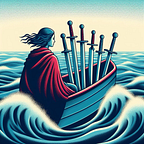Tarot, divination, self-knowledge, Jung: let’s start
It is speculated that the tarot’s origins go back to the 14th century, when the first card games arrived in Europe, brought by the Muslims. Quickly spread across the European continent, the deck’s design was gradually improved. First, the Italians, then the Spanish and Germans, altered or added elements to the deck.
Since then, several versions of the cards have appeared — and still do — in the in the world’s four corners. But, after all, what is the tarot? Divination or self-knowledge? What is the meaning of each card? How can reading a tarot help improve your life?
I advance that I do not have an answer to all the questions. But I collect clues that have been helping me, little by little, to follow the path that fits me in this world.
Join me on the journey to unravel each card in the deck, its endless connections and meanings.
The deal is simple: I share what I know, you comment, question, complement. And, question by question, we recover the wisdom lost in the most intimate of us.
This psyche, infinitely old, is the base of our mind, just as the structure of our body is based on the anatomical mold of mammals in general. The trained eye of the anatomist or biologist finds many traces of this original mold in our bodies. The experienced researcher of the human mind can also verify the analogies existing between the dream images of modern man and the expressions of the primitive mind, its “collective images,” and its mythological motives. (Carl G. Jung — Man and His Symbols)
